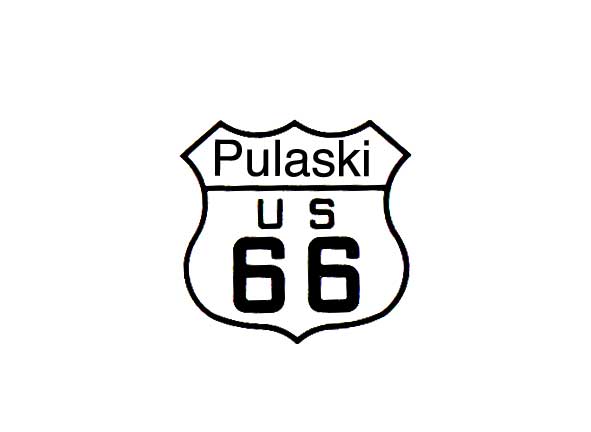

Audio Tour Stop 10
| The Devil's Elbow Cafe was definitely the most distinctive building on this stretch of the Main Street of America. Built by Dwight Rench around 1932, it was the villlage's second post office. In addition to gasoline and dining, there were weekly dances for some time. After Devil's Elbow was bypassed in 1945 by the new four-lane, tourist business dropped off precipitously. The Devil's Elbow Cafe closed and the building was used for warehousing liquor. It went up in an alcohol-fueled blaze in the mid-1970s, looking very much like its inferno design. |  |
 |
Charles O. McCoy put loitering workers waiting to get on at the army camp construction to work building this two-story store/hotel in 1941. McCoy also became the postmaster when he purchased the Devil's Elbow Cafe so McCoy's Market became the post office. Arranged around the store are tourist cabins, many rented by vacationers from St. Louis, who had been coming to Devil's Elbow for decades to hunt, fish, and escape the city heat. |
| This view is of the log building directly across the street from the Devil's Elbow Cafe. It is now a nice looking residence with vinyl siding. The owners did leave logs showing on the north gable end, facing the road. It was the Devil's Elbow Hardware on the first floor and the Hiawatha Lodge offering rooms for rent on the second floor. The rock castle in the foreground was the project of an elderly man, C. C. Smith, affectonately known as Uncle Cummie. |  |
 |
Aerial view of Devil's Elbow in the 1940s. The old road curves and climbs the hill going southwest out of the hamlet. You can pick out the buildings already mentioned on this page. In the upper left center is the rocked Piney River Lodge, still standing and now a residence. |
| In 1954, Charles McCoy's son-in-law, Jiggs Miller, built this market between the two-story hotel/apartment building and the closed Devil's Elbow Cafe. Jiggs became the postmaster, a job he held for 30 years. Jiggs and his wife Dorothy built a white frame house directly across the street. |  |
 |
 |
Devil's Elbow was named by 19th century tie rafters. As they floated rafts of railroad ties, sometimes a quarter of a mile long, they encountered a sharp bend in the Big Piney River where the rafts occasionally broke apart. "A Devil of a bend!" was the exclamation and, hence, the name. |